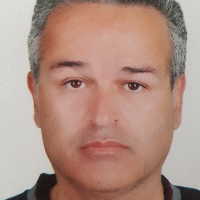Qualitative Assessment of Groundwater Resources of Asadabad Plain using WQI, Cd, HPI, HEI, PoS and MI Indices in 2018
Nowadays, the increase in population growth rate and followed by anthropogenic activities such as urbanization, industrialization, mining and agriculture practices continuously increase the amount of heavy metals in the environment especially groundwater resources. Therefore, qualitative assessment of groundwater resources is of great importance for maintaining public health and for this reason, this study was conducted to qualitative assessment of groundwater resources of Asadabad Plain using WQI, Cd, HPI, HEI, PoS and MI indices in 2018.
In this descriptive cross-sectional study, 120 groundwater samples were collected from 20 stations in the spring and the summer seasons and their temperature, pH and EC values were measured on-site. In the laboratory, the values of physicochemical parameters were determined according to the standard methods. Also, the content of heavy metals was determined using inductively coupled plasma-optical emission spectrometry (ICP-OES). All statistical analyses were performed using SPSS software.
The results showed that the average concentrations of Na, PO4-, Cl-, Ca, Mg and NO3- (mg/L) in samples of the spring season were 21.8, 0.230, 0.170, 69.0, 21.1 and 19.3, respectively; and in the summer season were 8.14, 0.190, 0.160, 75.3, 15.6 and 19.8, respectively. Also, the average concentrations of As, Fe, Zn, Pb, Cd, Cr, Cu, Mn and Ni (μg/L) in samples of the spring season were 5.10, 1.61, 0.970, 7.82, 0.230, 1.25, 3.58, 0.360, and 1.30; and in the summer season were 21.4, 1.62, 1.24, 7.63, 0.200, 1.00, 6.73, 0.430, and 1.01, respectively, and except for As in samples of the summer season, the average concentrations of all elements in groundwater samples of both seasons were lower than the maximum permissible concentration (MPC) established by WHO for drinking water. In addition, water quality index (WQI), pollution index (Cd), heavy metal pollution index (HPI), heavy metal evaluation index (HEI), quality index (PoS) and heavy metal index (MI) of samples of the spring season with values of 18.2, -7.53, 9.86, 1.64, 298 and 1.64, respectively, indicate the quality of groundwater were categorized in "excellent and very good", "low pollution", "low pollution", "low pollution", "low pollution" and " slightly affected" classes and in the summer season with values of 17.9, -5.94, 9.86, 3.05, 602, 3.05, respectively, were categorized in "excellent and very good", "low pollution", "low pollution", "low pollution", "high pollution" and "moderately affected" classes.
Although only the average values of As in groundwater samples of the summer season were higher than the MPC, management of the use of agricultural inputs such as pesticides, chemical and organic fertilizers and municipal wastewater for irrigation to maintain the quality of groundwater resources of the study area is recommended.
- حق عضویت دریافتی صرف حمایت از نشریات عضو و نگهداری، تکمیل و توسعه مگیران میشود.
- پرداخت حق اشتراک و دانلود مقالات اجازه بازنشر آن در سایر رسانههای چاپی و دیجیتال را به کاربر نمیدهد.




